Practical Boat Owner
- Digital edition


“How I sailed around the world in my 32ft yacht”
- Jeremy Bagshaw
- February 15, 2024
The fifth finisher in the 2022 Golden Globe Race, Jeremy Bagshaw shares how he prepared his OE32 for a non-stop circumnavigation alone

At 32ft, Olleanna was the smallest boat in the 2022 Golden Globe Race fleet, but had the second longest waterline and was one of just five boats to finish. Credit: GGR2022/DD&JJ Credit: GGR2022/DD&JJ
How to sail around the world in a 32ft yacht
She was one of the saddest boats I’d ever seen, but her lines were beautiful.
Olleanna , an Olle Enderlein-designed OE 32 with a dark blue hull, caught my eye in a way that few boats ever have; it was love at first sight as I stared down at her from the dock at the Royal Cape Yacht Club in Cape Town.
In South Africa, we don’t see a lot of foreign designs other than the run-of-the-mill French production boats from Beneteau , Dufour and Jeanneau, so Olleanna stood out.
I started asking around and found she’d been entered in the 2018 Golden Globe Race by her Norwegian owner and skipper, Are Wiig.
Are was in fourth position in the race when he suffered a knockdown and capsized around 400 miles south-west of Cape Town.

Are Wiig sailed 400 miles under jury rig to Cape Town after Olleanna was dismasted in the 2018 Golden Globe Race. Credit: Eban Human/PPL/GGR
He was dismasted and the coachroof was damaged by the falling rig. He managed to erect a jury rig using twin spinnaker poles and sail unassisted to Cape Town showing true seamanship.
On arrival, she was eventually purchased by a local boatbuilder who repaired the structural damage and stepped a new rig.
It was at this stage I stumbled across her and the seeds of an adventure were planted in my mind!
It wasn’t long before I was researching the design and how Are had fared in the build-up to the Golden Globe Race and the first 8,000 miles of the race.
He’d sailed Olleanna up to the edge of the Arctic Circle and had set a record time for the return leg south along the Norwegian coast.
Over 200 hulls have been built in Denmark and Sweden since 1971 – Olleanna was Swedish-built in 1973 – and some of them had done remarkable voyages in the North Atlantic giving credibility to the legendary sea-keeping attributes of the design.
Craftsmanship
The Olle Enderlein 32 is a full keel , cutter-rigged cruising boat with the rudder hung off the trailing edge of the keel below a ‘North Sea transom’ sometimes more commonly known as a double-ender.
She has a generous waterline length of 8.38m (27ft 6in) on a length overall of 9.89m (32ft 5in) and a decent sail area/displacement ratio of 14.48 indicating a forgiving rig that is neither under nor overpowered for cruising.

The rudder of the OE32 is hung off the trailing edge of the keel below her North Sea transom. Credit: Katy Stickland
Displacement of a little over 6,200kg puts her on the heavier side of equivalent-length modern production boats but this is a comforting factor given the more severe weather conditions that will inevitably be encountered on a circumnavigation as opposed to coastal and short hop cruising that modern production boats of this size are designed for.
The designer hit a sweet spot with this boat and created a wonderful balance between performance in all weather conditions, comfortable sea-keeping qualities, seaworthiness and roominess below decks.
The best route to sail around the world
The route of my circumnavigation was the traditional tradewind route from west to east.
I departed from Les Sables d’Olonne, France, and sailed back there some 278 days later via the three Great Capes – Good Hope, Leeuwin and Horn.
As part of the race route, we needed to pass check-in points at Lanzarote, Cape Town and Hobart; we also had to leave Isla Trinidade to port, latitude 44°S to starboard while in the Indian Ocean and latitude 47°S to starboard in the Pacific Ocean, with a few modifications to allow rounding of Cape Horn at 56°S.
An early September start in France gives a small-boat sailor the best chance of passing into the Southern Ocean in the Austral summer and of rounding Cape Horn before the Austral autumn – and the greater possibility of inclement weather – sets in.

All halyards and reefing were at the mast. A basket kept the line tails stowed. Credit: Macmedia2021/Simon McDonnell
The first two months of the voyage were spent in mainly summery weather as we traversed the temperate and tropical regions with some tradewind conditions, but also a lot of squally tropical weather.
The voyager needs to be prepared for conditions that frequently change in direction and intensity. This requires a conservative approach to sail selection and watchkeeping strategy to minimise the risk of damage to the boat and sails.
After entering the South Atlantic, the effects of the constant west-east flow of air means that while conditions are more predictable, they are also more extreme.
Passage planning in this region is all about weighing up the pros and cons of sailing a shorter distance with bigger weather at higher latitudes versus warmer and probably milder conditions in the temperate zones with a good chance of contrary (easterly) winds.
Prepare for success
When planning to undertake any ocean passage, the better your preparation, the more enjoyable the sail is likely to be.
For a circumnavigation, and in my case a non-stop one, preparation was paramount given that I needed to be completely self-sufficient for 30,000 miles.
While I admittedly prepared my boat with a round-the-world race in mind, I accept that other sailors may have a different philosophy.
But having been one of only six starters out of 16 to finish, I believe that preparing a boat for racing may be a very good standard to work towards, even when you only intend to cruise.
When I bought Olleanna in December 2019 she was still showing all the signs of a boat that had suffered a knockdown and capsize, damage to the deck and serious water ingress .
I realized that I had a mountain to climb in terms of the refit.
My choice of boat was limited by a few factors, among them being affordability, availability and compliance with the 2022 Golden Globe Notice of Race.

Jeremy did a lot of the refit work himself. The yacht had a new Sparcraft mast. Credit: Jeremy Bagshaw
The OE 32 fitted neatly into the race requirements, albeit on the lower end of all the parameters.
I took some comfort in the fact that Suhaili , Robin Knox-Johnston ’s boat in the 1968 event, was also 32ft LOA although Suhaili displaced considerably more.
I also researched the causes of Olleanna ’s dismasting and after chatting to her previous owner, Are, I was comfortable that he’d been incredibly unlucky with a set of circumstances that conspired to knock him down in ‘one in a million’ conditions.
I was confident that I’d chosen a design that was fast enough to be competitive and robust and seaworthy enough to see me safely around the globe.
Olleanna ’s refit forced me to look at some of the conventionally accepted norms, especially in terms of sizing, durability, complexity and cost of equipment.

Olleanna ’s saloon, just days before the start of the 2022 Golden Globe Race; tennis net is to dry wet gear, act as another handhold and prevent objects sliding around the saloon floor. Credit: Katy Stickland
Upfront I decided to avoid cutting-edge new technology, anything I couldn’t either repair myself or do without if I wasn’t able to repair it.
I decided to over-size what I could without affecting the overall performance and to add strength to the deck and rig components wherever I could.
The second decision I made, which with the benefit of hindsight was critically important, was to introduce as much redundancy into every system as possible.
I tried to ensure that there was no way that the failure of a single component in a critical system would lead to the complete failure of the system.
A second pair of hands
Without a doubt, the most crucial part of passage making, especially for a solo sailor, is self-steering ; it is invaluable.
The correct system for your boat will steer 24 hours a day in all conditions, freeing the skipper up to get enough rest, keep well fed, keep a good lookout when necessary, attend to navigation, maintenance and a myriad of other tasks that need addressing daily on board.
The Golden Globe Race rules permitted only the use of windvane self-steering systems in keeping with the ethos of the original 1968 race.
There are several windvane self-steering manufacturers but competitors needed to submit reasons for selecting one that was not on the approved list.
There were two elements to this process.

Windpilot Pacific kit. Credit: Jeremy Bagshaw
Cynics might say the fact one manufacturer of an approved system was also a race sponsor had something to do with this, but the reality is that the 2018 race proved beyond doubt that some manufacturers produce more robust systems suited to the rigours of a non-stop circumnavigation than others.
The failure of self-steering systems was the single biggest contributor to retirements in both the 2018 and 2022 events.
Windvane self-steering systems can be roughly divided into two categories; those units that steer the vessel using the vessel’s rudder by means of a servo-pendulum arm, and those that steer the vessel using an auxiliary rudder while the vessel’s rudder is fixed in position to compensate for lee or weather helm.
Both systems have their pros and cons and some are more suited to certain transom types and boat handling characteristics than others, so choosing the best system for your boat is not always a simple matter.
I selected a Windpilot Pacific unit for Olleanna for a few reasons: it’s a relatively light system weighing in at 20kg excluding the bracket I had manufactured to attach it; the entire unit is accessible from the deck and there is no need to climb over the transom to repair or service any part of the unit.

The only damage to Jeremy’s Windpilot Pacific self-steering gear was two broken plywood windvanes, which were easily replaced. Credit: Jeremy Bagshaw
It’s a servo-pendulum system that uses the vessel’s rudder (with a large surface area) to steer the boat; it is an intrinsically simple but robust unit with few parts that could fail; it is a simple matter to replace or repair any part in the safety of the vessel’s cabin by removing the whole unit by releasing two bolts; in the event of a knockdown, the servo-pendulum arm does not come up against stops and potentially break, but rather can swing through a very large arc unhindered; it is incredibly powerful, exerting some 200kg force at the tiller enabling it to cope with enormous loads.
With the benefit of having sailed with the Windpilot for over 40,000 miles in 14 months, I can confidently say it was one of the best decisions I made.
The unit steered perfectly in all conditions (except for drifting conditions with a big swell), even when I was forced to sail under bare poles for up to 48 hours at a time.
The only damage I suffered was two broken plywood windvanes when extra large waves smashed over the stern and it was a two-minute job to replace the blades with spares!
Rig and standing rigging to sail around the world
While it’s possible to improvise in many cases of gear failure and to continue sailing without too much inconvenience, the loss of a rig usually spells the end of the voyage.
At best you can set up a jury rig from leftover pieces of spars, at worst you may need to be rescued.
With this in mind, I was very diligent with Olleanna ’s rig. I was fortunate in that after Are’s dismasting, the next owner purchased a well-specified section from Sparcraft Cape Town.
I went to chat with the extremely knowledgeable engineers there and together we decided on some enhancements that could make an already strong rig even stronger and more suitable for my circumnavigation.

A displacement of just over 6,200kg makes Olleanna less prone to weather-induced damage than lighter, equivalent-length modern production boats. Credit: Macmedia2021/Simon McDonnell
The cap shroud attachment points were changed from conventional ‘T-ball’ slots to bolted-through and welded tangs that took appropriately sized fork fittings.
The forestay tang was upsized and fitted with a stainless steel grommet.
The vulnerable slots that take the forward and aft lowers had doubler plates fitted around them to absorb and spread the load in this area.
In the 2018 race, the eventual winner, Jean-Luc van den Heede, had two of his lower shrouds tear deep grooves into the mast, effectively making the shrouds too long and causing the middle of the mast to be unsupported.
He was able to make a jury rig to repair the worst of the damage.
Avoiding chafe
I specified twin spinnaker pole topping lifts and given the large arc that the lifts potentially travel through, we had a cage fitted to the front of the sheave box to act as a frictionless guide and prevent chafe.
I wanted to have my genoa halyard on a rack to relieve pressure on a clutch or other cleating arrangement and also to prevent having a whole halyard floating around the foredeck and serving no purpose.
We decided to go with a wire halyard and so replaced the traditional halyard sheave with one for use with a wire halyard.
Sparcraft also suggested reinforcing the gooseneck fitting and through bolting the running backstay attachment points at the second spreaders.

The Watt & Sea hydrogenerator worked well as long as the boat speed was 4 knots or more. Credit: Jeremy Bagshaw
We made up a lighter whisker pole that fitted the foot length of both the staysail and the storm jib rather than using a spinnaker pole with the increased risk associated with trying to manoeuvre a long pole in brisk conditions.
This whisker pole saw many thousands of miles of service in the Southern Ocean.
We also made up oversized spinnaker pole stowage fittings which were bolted to a backing plate below decks.
These fittings were made to be used as the bases for a jury rig as well.
The last enhancement was an idea pinched from modern cruising catamaran rigging. It was a combination step and also a basket to stow all halyard and reefing line tails.

Olleanna had brand new running rigging; only a spinnaker halyard and spinnaker sheet needed replacing during the 32,000-mile race. Credit: JL Lhomond
I decided to keep all halyards and reefing at the mast rather than bring them back to the cockpit and the resulting halyard tails can be hard to keep tidy without a storage solution.
The step also gave me the extra height needed when attaching the main halyard to the head of the mainsail which stacks quite high with five full battens and meant I didn’t need to balance precariously to reach it.
We decided not to have a moveable/adjustable spinnaker pole mast side fitting, opting instead for simplicity and two fixed rings at carefully calculated heights.
I also specified a Profurl roller furler one size up from the manufacturer’s recommended size.
I believe that the combination of all of the above gave me a completely hassle-free rig experience.
There’s always the weakest link in any chain and in my case it was a weld on the forestay stem fitting/chainplate that sheared 800 miles from the finish, leaving me unable to fly a genoa or sail upwind in variable conditions with only a staysail.
Cockpit drains
A large part of preparation is anticipating things that could go wrong but are outside your range of experiences.
This is where preparing a cruising boat according to the requirements of a race makes sense.
The regulations have often been formulated from a very broad base of experience in real-world situations.
One of the Golden Globe Race requirements was that the cockpit must be able to drain very quickly if filled by beam or following seas.

Buy the best base, mid and outer clothing layers you can afford. Jeremy wore North Sails Offshore gear and stayed dry in storms. Credit: Riaan Smit
On Olleanna , we exceeded the recommended cockpit drain volume by around 50% which proved to be a good move on the few occasions where I was swamped.
With a boat that does not have a cockpit open to the transom, it is critical to get any excess water back overboard as quickly as possible.
As we all know, one cubic metre of water weighs a ton and even a small cockpit like Olleanna ’s could easily hold 400kg of water which very definitely impacts the boat’s handling at a critical time.
Designed-in redundancy
These are all the systems on Olleanna that were designed to provide backup in the event of failure of a component of the main system.
- Twin mainsheet system: not only does this provide additional control during manoeuvres but it also gives great control over mainsail shape and if one fails, there’s another already in place.
- Watt & Sea hydrogenerator and solar PV system : to keep batteries charged to power onboard systems it’s necessary to have a regular or constant charge. On a circumnavigation, you’re often in areas where there is significant cloud cover or even when there is adequate sunshine, the course you’re sailing (usually west to east) means that the boat’s PV system is often shaded for a large part of the day. To compensate, you can use a towed or transom-mounted hydrogenerator. I used a Watt & Sea 300W Long Leg Cruising unit which kept a steady incoming charge whenever boat speed was 4 knots or more.
- Twin spinnaker poles and pole topping lifts provided redundancy if one was damaged or lost.
- I used twin foreguys (spinnaker pole downhauls) for the same reason. These also doubled up as gybe preventers, attaching quickly and easily to permanently rigged preventer lines on the boom. Twin halyards for spinnakers, genoa and mainsail made changeover an easy and risk-free process.
- I did not have a furling drum on my inner forestay and instead used a hanked-on staysail and storm jib; in the event of a failed furler, I’d still be able to set foresails. This wasn’t always convenient, and changing down from staysail to storm jib usually involved getting pretty cold and occasionally wet!
- A tiller comb was traditionally used on Pilot Cutters and the like to provide another ‘pair of hands’ to hold the tiller when the skipper needed theirs! When sailing short-handed, you can never underestimate the value of being able to leave the helm, even for short periods, to attend to other matters and your self- steering may not always be available to take over. My tiller comb was effectively my third crew member and was used extensively in conditions where the wind was too light for the windvane to be effective when motoring, or when I had my Windpilot off the transom for servicing.
Shelter from the elements
There’s an old saying that ‘it’s easier to stay dry than to get dry’ and this is never more true than in the high latitudes where getting wet can have serious comfort, health and safety consequences. Essential to the principle of staying dry are a few considerations.
- Clothing: get the best gear you can afford. Base, mid and outer layers need to be carefully considered. Merino wool products have become the default gear for base- and mid-layers. Warm and light, they also have the most desirable property of not retaining any body odour! Outer layers are equally important and this technology has advanced hugely in the last decades with many brands using industry-leader Gore-Tex fabric. I used North Sails Offshore gear over South African Core Merino base- and mid-layers and even in the most miserable conditions, I stayed completely dry and warm.
- Footwear: like the head, if your feet are wet and cold the rest of the body will not be comfortable. Choose sailing boots that are high enough to prevent ingress when working in the scuppers, and have good non-slip soles. Make sure they’re a few sizes bigger than your normal deck shoes so they can be slipped on over a couple of pairs of socks in a hurry. Leather looks great, but rubber/plastic uppers are more waterproof and require less maintenance. •
- Spray dodger/hood and cockpit tent : never underestimate the importance of this piece of deck gear. It provides a sheltered spot for you to stay in touch with conditions on deck but without having to subject yourself to the full force of the elements, especially in a smaller boat where the cockpit is naturally more exposed. The cockpit tent enclosure is a wonderful addition to the standard dodger, especially when sailing downwind for extended periods with rain and following seas as it allows you to keep the companionway washboards stowed and airflow and connection with the outside. There are pros and cons to having the spray dodger constructed from fabric over a folding stainless steel frame or from rigid materials like plywood etc. With the benefit of hindsight, I’d opt for the hard construction next time.
- Ventilation: condensation is a real factor in higher latitudes , especially when sailing with more than one crew on board. Mould will develop in every nook and cranny aboard. The key to minimising this is good insulation and decent ventilation.
- Heating: in the higher latitudes it is cold. Managing it for the comfort of the crew can be as simple as dressing with more layers or as sophisticated as installing solid or liquid fuel heaters . In a small boat, space and weight are constant considerations and taking extra fuel for heating can be a challenge. I opted for the simplicity of just wearing more layers and having a very well-insulated sleeping bag – less weight, less to break and no chance of carbon monoxide poisoning.
Sails and running rigging to sail around the world
It may seem obvious but sails are the boat’s engine and consequently a critical component of a successful passage; this often doesn’t hit home until sail damage affects the ability to make proper way.
I paid particular attention to the positioning of reef points on my mainsail and the construction of tack and leech patches where loads are higher than normal.
Essential for me was when using a second reef, the head of the sail should be below the level of the running backstay attachments so I could have both runners tensioned during gybes and tacks.

The tiller comb was effective in light winds. Credit: Katy Stickland
I also decided against a storm trysail but rather had a very deep third reef and this served me well up to around 40 knots apparent.
After that, I was usually under bare poles!
My storm jib saw much active service from around 35 knots apparent when the staysail became too big.
Under triple reefed main and storm jib, Olleanna was reasonably comfortable up to around 40 knots.
I also specified a slightly higher clew on my yankee-styled genoa to give me a better view under the sail from the companionway and a better lead for poling out the sail when going downwind without having to re-route the sheets over the guardwires.

When sailing downwind in bad weather, Jeremy made plenty of use of the cockpit tent. Credit: Jeremy Bagshaw
All little details, but they made sailing easier and safer. I started the race with a brand new set of running rigging .
I replaced every halyard, reefing line and sheet. I kept the set that had around 10,000 miles on it as spares and was very careful to label each line that I removed and replaced so that it would be easy to identify a replacement in a hurry.
As it happened, on the whole 32,000-mile voyage, I replaced only a single spinnaker halyard and a spinnaker sheet that had a small amount of chafe developing .
Communication
Keeping in touch with the outside world during an extended passage has become something we all expect these days.
With everything from HF and VHF radio to satellite communication and Starlink connectivity available at ever more affordable rates, there is not much to debate on this topic.
I could help her by moving my human ballast to leeward. I particularly liked Veronique ’s ability to hold a steady course.
Continues below…

Crashed bow repair: how Abhilash Tomy & his team fixed the boat in time for the 2022 Golden Globe Race
What to do if your boat is damaged just days before a non-stop global circumnavigation? Rupert Holmes reports on how…

“I had a banana for a mast” 300 miles offshore: Lessons learned from a mid-Atlantic knockdown
Golden Globe Race entrant and former Clipper Race skipper Guy Waites suffers mast failure 300 miles from the Azores

How to sail to Australia from the UK in a small boat
Kate and Jonny Harrison dreamed of a round-the-world backpacking tour to Australia – but then their plans took a nautical

Jessica Watson – the real sailor behind the True Spirit film
Whilst the new Netflix True Spirit movie was being filmed, celebrating Jessica Watson's real-life teenage solo, non-stop global circumnavigation, the…
What I can say though, is that as a committed satphone and email aficionado, I was pleasantly surprised at the ease of use and practicality of my old Icom M802 set, which was installed with a backstay antenna and an automatic tuner.
I had no choice in the selection of HF as my primary communication tool as it was part of the race rules, and I was initially quite sceptical as to its usefulness.
But having chatted to shore stations and other yachts over distances of many thousands of miles, free, I can safely say I’m convinced that HF radio has a purpose and a place on board cruising boats today.
Training is key before you sail around the world
Before embarking on a solo voyage where you need to be very self-sufficient, it’s a good idea to brush up on some skills. •
- Celestial navigation : if the boat suffers complete electrical failure, you’ll be glad you took the refresher celestial navigation course. Although we were compelled to use sextants as our sole source of establishing position, it is something I’ll incorporate into my passage making routine in the future.
- Medical: while the chances of picking up viruses out at sea are almost nil, injury is always a possibility. Medical help is probably many days away, so the crew must be proficient in advanced First Aid. Having a good physician on call via satellite phone is another good option and several companies offer this service.
- Mechanical: Although we all put to sea in sailboats, with auxiliary power, it is inconvenient when facing a recalcitrant engine and almost flat batteries! The crew must be able to resolve basic engine issues as this can be the difference between negotiating a tricky safe haven entry and having to stand off a lee shore in foul conditions at the end of a long passage. Muck in a fuel tank will quickly make its way into filters and diesel injectors so the crew should have an intimate knowledge of the vessel’s fuel system.
Is a 32ft monohull an ideal boat to sail around the world with? The boat you have is the best one to circumnavigate with!
If it’s on the smaller side, like a 32-footer, then preparation becomes that much more important.
Smaller boats are more susceptible to weather-induced damage than boats with heavier displacement and longer waterlines but a larger-sized vessel is no guarantee of a successful voyage.
Prepare well, route conservatively, be patient and be respectful of the power of nature and you’ll give yourself the best chance.
Many sailors have successfully circumnavigated in smaller vessels, so don’t let that be a reason to not set out on the voyage of a lifetime.
Enjoy reading How to sail around the world in a 32ft yacht?
A subscription to Practical Boat Owner magazine costs around 40% less than the cover price .
Print and digital editions are available through Magazines Direct – where you can also find the latest deals .
PBO is packed with information to help you get the most from boat ownership – whether sail or power.
- Take your DIY skills to the next level with trusted advice on boat maintenance and repairs
- Impartial in-depth gear reviews
- Practical cruising tips for making the most of your time afloat
Follow us on Facebook , Instagram, TikTok and Twitter
Review of OE 32
Basic specs..
The hull is made of fibreglass. Generally, a hull made of fibreglass requires only a minimum of maintenance during the sailing season. And outside the sailing season, just bottom cleaning and perhaps anti-fouling painting once a year - a few hours of work, that's all.
The boat is equipped with 230.0 liter fresh water capacity. Note: the boat has also been sold to be self-made/-interiored, which means that the quality of each boat may vary.
The boat equipped with a masthead rig. The advantage of a masthead rig is its simplicity and the fact that a given sail area - compared with a fractional rig - can be carried lower and thus with less heeling moment.
The OE 32 is equipped with a long keel. A full keel provide a better directional stability than a similar boat with a fin keel; on the other hand, better directional stability means also that the boat is more difficult to handle in a harbour with less space.
The keel is made of iron. Many people prefer lead keel in favour of iron. The main argument is that lead is much heavier than iron and a lead keel can therefore be made smaller which again result in less wet surface, i.e. less drag. In fact iron is quite heavy, just 30% less heavy than lead, so the advantage of a lead keel is often overstated.
OE 32 can enter most marinas as the draft is just about 1.50 - 1.60 meter (4.92 - 5.22 ft) dependent on the load. See immersion rate below.
The boat is typically equipped with an inboard Volvo Penta MD11 diesel engine at 23 hp (17 kW). Calculated max speed is about 5.1 knots
The fuel tank has a capacity of 180.0 liters (47 US gallons, 39 imperial gallons).
Sailing characteristics
This section covers widely used rules of thumb to describe the sailing characteristics. Please note that even though the calculations are correct, the interpretation of the results might not be valid for extreme boats.
What is Capsize Screening Formula (CSF)?
The capsize screening value for OE 32 is 1.76, indicating that this boat could - if evaluated by this formula alone - be accepted to participate in ocean races.
What is Theoretical Maximum Hull Speed?
The theoretical maximal speed of a displacement boat of this length is 7.0 knots. The term "Theoretical Maximum Hull Speed" is widely used even though a boat can sail faster. The term shall be interpreted as above the theoretical speed a great additional power is necessary for a small gain in speed.
The immersion rate is defined as the weight required to sink the boat a certain level. The immersion rate for OE 32 is about 180 kg/cm, alternatively 1011 lbs/inch. Meaning: if you load 180 kg cargo on the boat then it will sink 1 cm. Alternatively, if you load 1011 lbs cargo on the boat it will sink 1 inch.
Sailing statistics
This section is statistical comparison with similar boats of the same category. The basis of the following statistical computations is our unique database with more than 26,000 different boat types and 350,000 data points.
What is Motion Comfort Ratio (MCR)?
What is L/B (Length Beam Ratio)?
What is a Ballast Ratio?
What is Displacement Length Ratio?
What is SA/D (Sail Area Displacement ratio)?
What is Relative Speed Performance?
Maintenance
When buying anti-fouling bottom paint, it's nice to know how much to buy. The surface of the wet bottom is about 20m 2 (215 ft 2 ). Based on this, your favourite maritime shop can tell you the quantity you need.
Are your sails worn out? You might find your next sail here: Sails for Sale
If you need to renew parts of your running rig and is not quite sure of the dimensions, you may find the estimates computed below useful.
| Usage | Length | Diameter | ||
| Mainsail halyard | 29.3 m | (96.1 feet) | 10 mm | (3/8 inch) |
| Jib/genoa halyard | 29.3 m | (96.1 feet) | 10 mm | (3/8 inch) |
| Spinnaker halyard | 29.3 m | (96.1 feet) | 10 mm | (3/8 inch) |
| Jib sheet | 9.9 m | (32.5 feet) | 12 mm | (1/2 inch) |
| Genoa sheet | 9.9 m | (32.5 feet) | 12 mm | (1/2 inch) |
| Mainsheet | 24.8 m | (81.2 feet) | 12 mm | (1/2 inch) |
| Spinnaker sheet | 21.8 m | (71.5 feet) | 12 mm | (1/2 inch) |
| Cunningham | 3.4 m | (11.2 feet) | 10 mm | (3/8 inch) |
| Kickingstrap | 6.8 m | (22.3 feet) | 10 mm | (3/8 inch) |
| Clew-outhaul | 6.8 m | (22.3 feet) | 10 mm | (3/8 inch) |
This section is reserved boat owner's modifications, improvements, etc. Here you might find (or contribute with) inspiration for your boat.
Do you have changes/improvements you would like to share? Upload a photo and describe what you have done.
We are always looking for new photos. If you can contribute with photos for OE 32 it would be a great help.
If you have any comments to the review, improvement suggestions, or the like, feel free to contact us . Criticism helps us to improve.
Visit our Popular Forums
- Monohull Sailboats
- Multihull Sailboats
- Powered Boats
- General Sailing
- Antares Yachts
- Fountaine Pajot
- Lagoon Catamarans
Cruising Business
- Boat Classifieds
- General Classifieds
- Crew Positions
- Commercial Posts
- Vendor Spotlight
Life Aboard a Boat
- Provisioning: Food & Drink
- Families, Kids, & Pets Afloat
- Recreation, Entertainment, & Fun
- Boat Ownership & Making a Living
- Liveaboard's Forum
Seamanship, Navigation & Boat Handling
- Seamanship & Boat Handling
- Training, Licensing, & Certification
- Health, Safety, & Related Gear
- Rules of the Road, Regulations, & Red Tape
Engineering & Systems
- Const. / Maint. / Refit
- Product / Service Reviews
- Electronics: Comms / AV
- Electrical: Batts / Gen / Solar
- Lithium Power Systems
- Engines & Propulsion
- Propellers & Drive Systems
- Plumbing / Fixtures
- Deck Hdw: Rigging / Sails
- Aux. Equipment & Dinghy
- Anchoring & Mooring
Photo Categories
- Member Galleries
- Life Onboard
- Sailing in the Wind
- Power Boats
- Cruising Destinations
- Maint. & Boat Building
- Marine Life
- Scuba Diving & Divers
- General Photos
Recent Photos

Listing Categories
- African Cats
- view more »
- Crew Wanted
- Crew Available
- Enhance Your Account
- Meet the Mods
- Meet the Advisors
- Signup for The Daily Cruiser Email

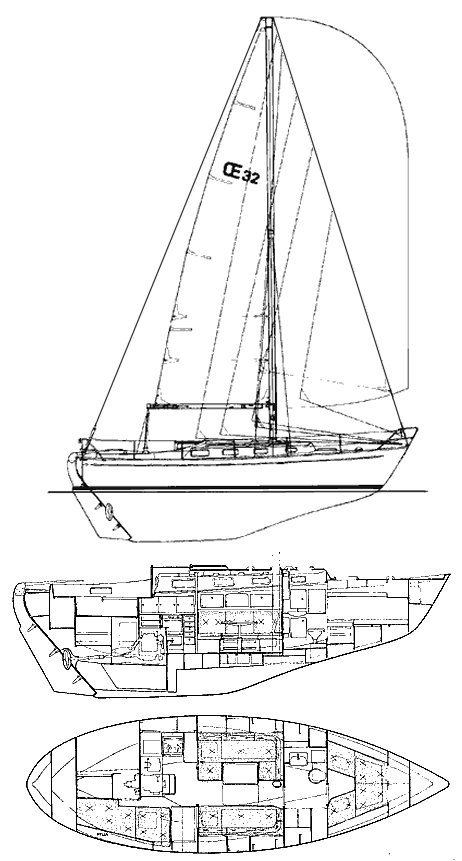





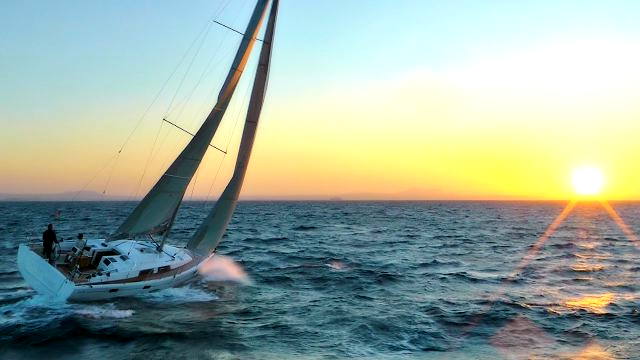
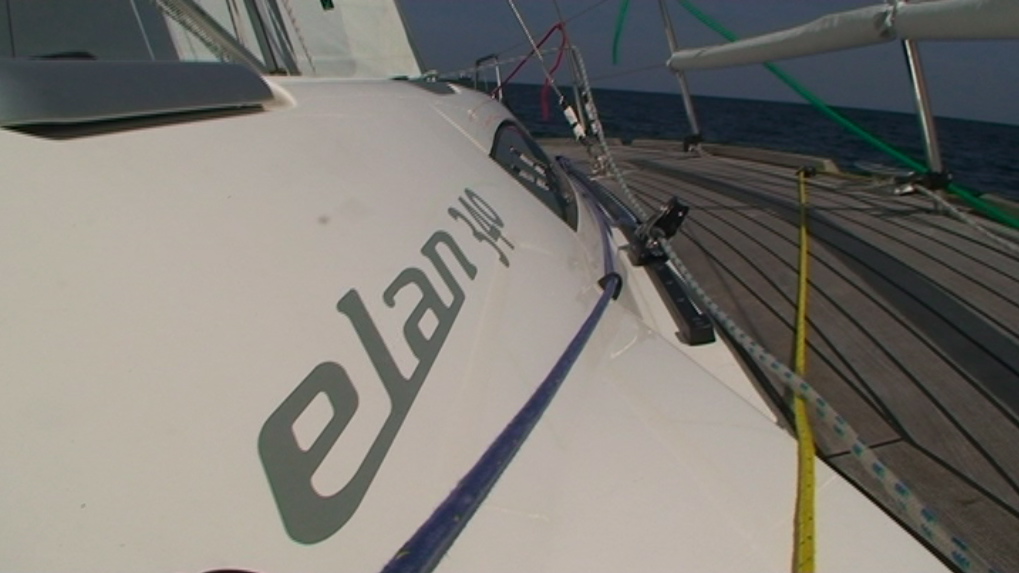
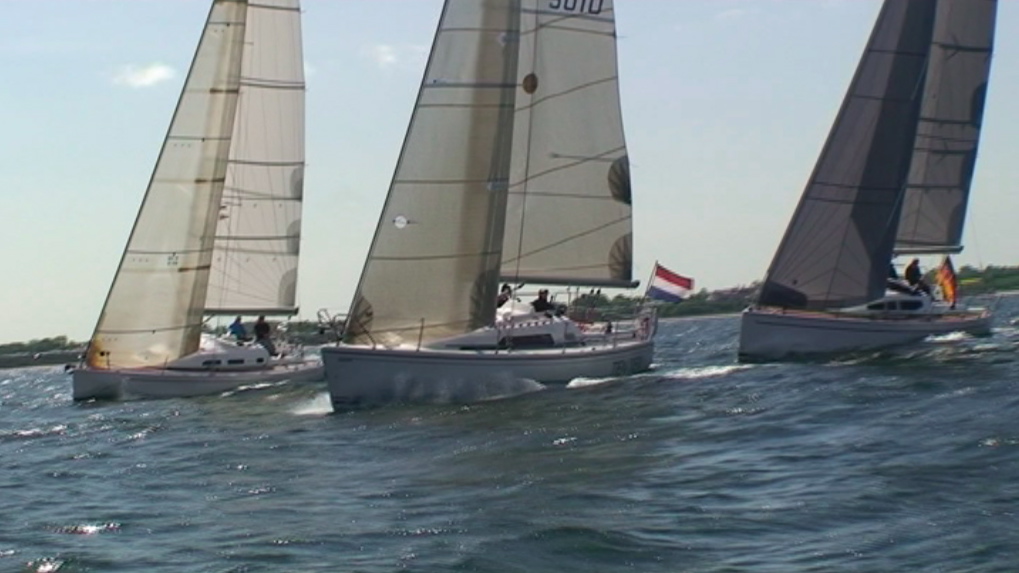
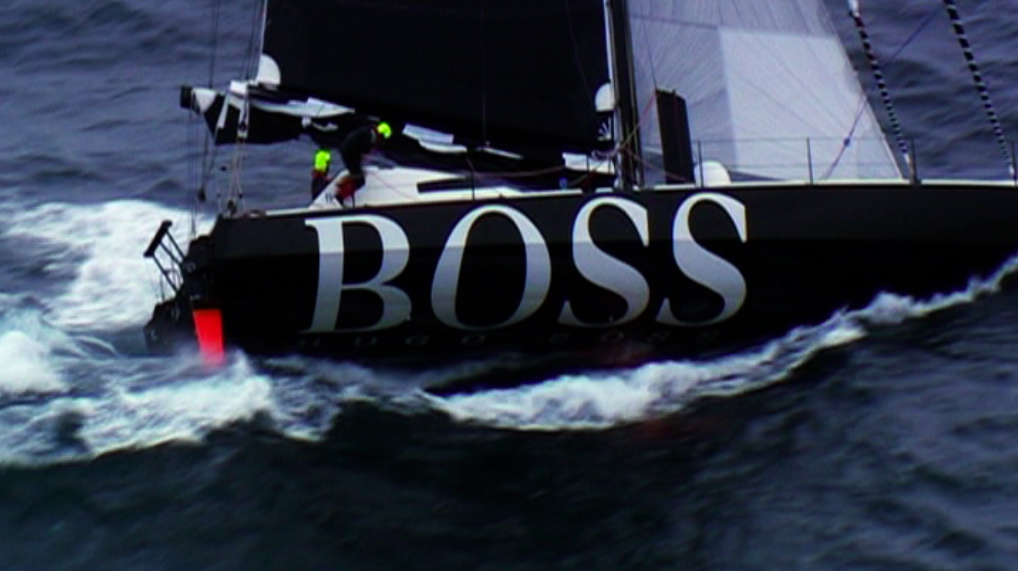
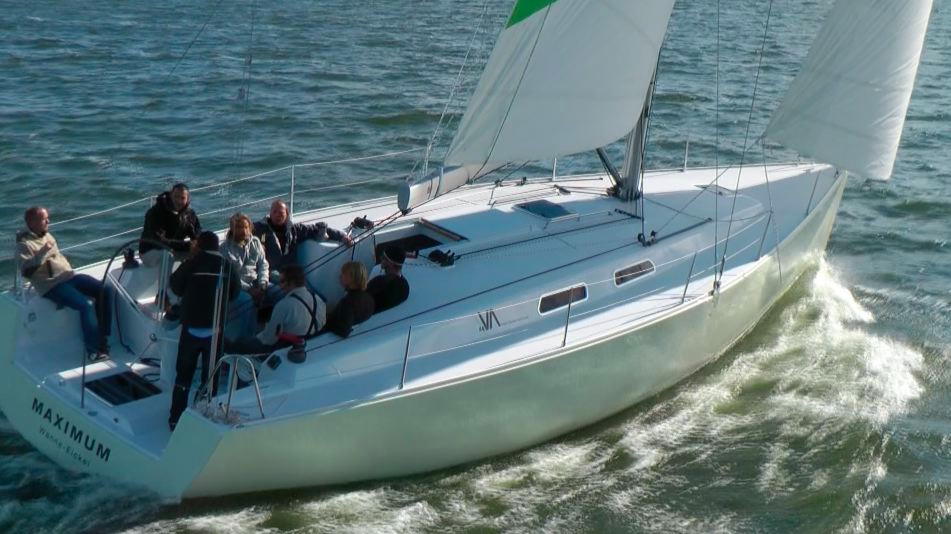
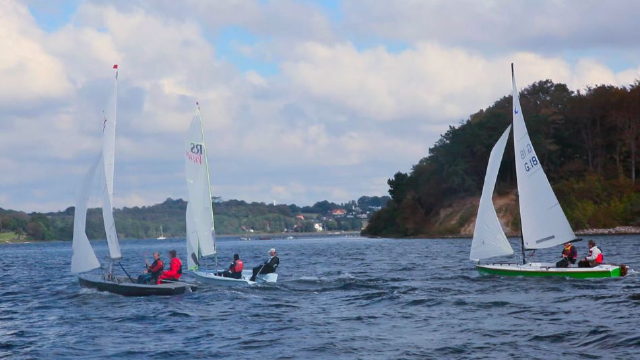
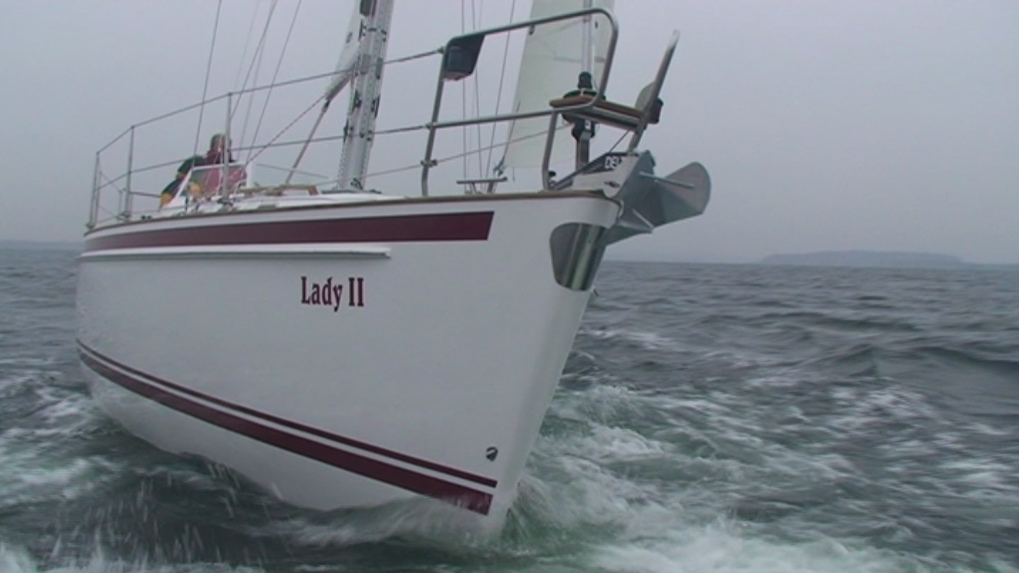
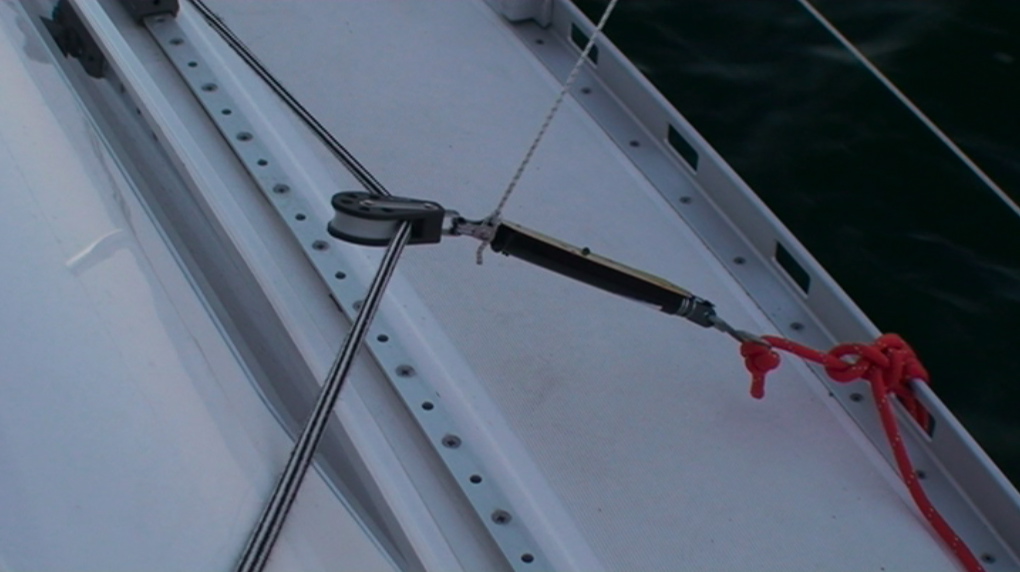

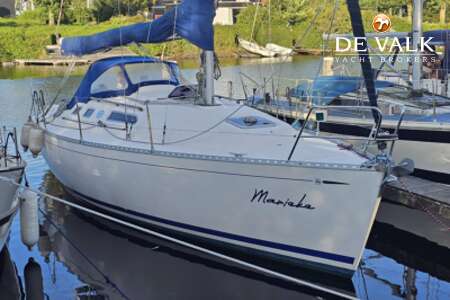
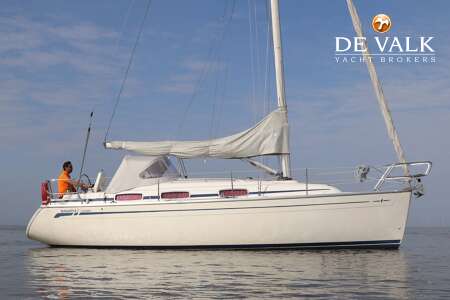
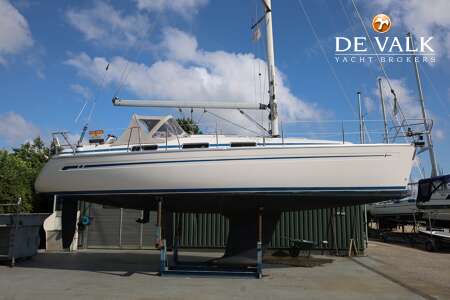



IMAGES
VIDEO
COMMENTS
The fifth finisher in the 2022 Golden Globe Race, Jeremy Bagshaw shares how he prepared his OE32 for a non-stop circumnavigation alone. At 32ft, Olleanna was the smallest boat in the 2022 Golden Globe Race fleet, but had the second longest waterline and was one of just five boats to finish. Credit: GGR2022/DD&JJ Credit: GGR2022/DD&JJ.
Keel. Full keel. The OE 32 is equipped with a long keel. A full keel provide a better directional stability than a similar boat with a fin keel; on the other hand, better directional stability means also that the boat is more difficult to handle in a harbour with less space. The keel is made of iron. Many people prefer lead keel in favour of iron.
Consider, though, that the typical summertime coastal cruiser will rarely encounter the wind and seas that an ocean going yacht will meet. Numbers below 20 indicate a lightweight racing boat, small dinghy and such; 20 to 30 indicates a coastal cruiser; 30 to 40 indicates a moderate bluewater cruising boat; 40 to 50 indicates a heavy bluewater boat;
Join Date: Mar 2011. Location: Southport CT. Boat: Sabre 402. Posts: 2,756. Re: OE32. Being eligible for the Golden Globe Race does not mean a boat is necessarily well-suited for ocean sailing. It means it is an old design. That was one of the criteria for acceptable entries. Newer boats need not apply.
The Oe 32 is a 32.45ft masthead sloop designed by Olle Enderlein and built in fiberglass between 1973 and 1983. 200 units have been built. The Oe 32 is a moderate weight sailboat which is slightly under powered. It is very stable / stiff and has an excellent righting capability if capsized. It is best suited as a bluewater cruising boat.
OE 32 is a 32′ 5″ / 9.9 m monohull sailboat designed by Olle Enderlein and built by Sundsör's Ship Yard(SWE)/Eggers (GER) between 1973 and 1983. ... It may be unable to reach this speed if the boat is underpowered or heavily loaded, though it may exceed this speed given enough power. Read more.
Broker's comments. OE 32, a beautiful S-shaped canoe stern Danish sailing yacht, designed by Olle Enderlein. A yacht with great maneuverability in the smallest port or near shores due to her draft of 1,50 m. Easily handled by the smallest crew under practically all weather conditions, even solo. Engine of 2011, paintjob hull 2012.
OE 32. Built: 1983. Material: GRP. Dimensions: 9,89 x 3,18 x 1,50 m. Sold in: 2014. OE 32, a beautiful S-shaped canoe stern Danish sailing yacht, designed by Olle Enderlein. A yacht with great maneuverability in the smallest port or near shores due to her draft of 1,50 m. Easily handled by the smallest crew under practically all weather ...
Beautiful S-shaped, canoe stern OE 32 "Lorbas", designed by Olle Enderlein, a yacht with great manoeuvrability in the smallest port or near shores due to her draft of only 1.50 m. Easily handled by the smallest crew under practically all weather conditions. Bukh DV36 36 hp diesel engine of 1997.
With OE 32. This beautiful one-owner boat is constantly updated with new things, a new bow thruster, electric anchor winch, engine from 2006, cockpit tent and much more. Please contact Yachtbasen to arrange a viewing. Services. Yacht Insurance by Pantaenius Get a FREE quote here. Yachtexpertise Yacht and Boat surveys. EUR 26.820,-
Den Anfang macht Andreas Schiebel mit seiner „Slisand", einer OE 32. Viel Spaß damit. Ganz herzlich bedanken möchten wir uns bei Pantaenius, die als Präsentator diese Serie ermöglicht haben. 10.01.2010 173416 x angesehen Boote ... Yacht Test - Schlank, schnell und trailerbar: Probeschlag mit der Clarc 33
DailyBoats.com offers a selection of Oe 32 for sale , with prices ranging from £18,238 for basic models to £35,700 for the most expensive. These yachts come in a range of sizes, ranging from 32.45 ft to 32.45 ft, with the oldest one built in 1977. This page showcases OE boats located in Germany, Denmark and Sweden.
Super Anarchist. 2,945. 901. Le Minihic near St. Malo. Mar 20, 2006. #5. The Dubai factory is currently building a Prima 38, a Seaquest 36 and an SJ320. The 32/320 is a good boat with all round ability. Most of them are tidily finished, but like any boat that races, can get a bit trashed in use so you need to find a smart one.
Join Ben Knowles from East Coast Yacht Sales as we take the Targa 32 out for a full performance test! We run the boat at various speeds, including wide open ...
This vessel was designed and built by the OE shipyard in 1988. Key features 1988 OE 32: length 9.89 meters, beam 3.18 meters, boat displacement 6,100 kilograms and max boat draft 1.55 meters. Hull key features 1988 OE 32: hull material - fiberglass. 1 x leyland engine: fuel type - diesel. 1988 OE 32 refers to classes: powerboats.
General - OE 32. OE32 "Zuidwester", built in 1983 by Sundeved Yachtvaerft in Sonderborg - Denmark, designed by Olle Enderlein, dim.: 9,89 m (Lwl 8,40 m) x 3,18 m x 1,50 m, GRP hull, superstructure and deck, teak railinga and teak details on deck, 3x Gebo hatches, S-shaped hull, displacement: 5,8 tonnes, fuel tank: 40 litres, fresh water: 225 ...
1987 OE32, EUR 33,525. If you are looking for the boat that can take you safely around our blue planet, then this one-owner OE 32 might be the boat you are looking for! With OE 32. This beautiful one-owner boat is constantly updated with new things, a new bow thruster, electric anchor winch, engine from 2006, cockpit tent and much more.
EUR 39.000,-. basis for negotiation. Category Sail Boats. Boat Type Sailing Yacht. Model OE 32. Type Used boat. Year built 1982. Condition very good. Length 9.89 m.
OE 32 bygget 1987 sælges. Båden fremstår meget velholdt, både inde og ude. Den egner sig til familien som ønsker en stabil og velsejlende båd. Der er et dejligt Cockpit med Teak, om læ er der 6 køjepladser. Den er udstyret med en Perkins Diesel motor på 35 HK, Fast aksel med 3 bladet skrue, samt en omfattende udstyrsliste ( se udstyrslisten).
A boat's actual draft is usually somewhat more than the original designed or advertised draft. For boats with adjustable keels (centerboards, daggerboards, lifting and swing keels), Draft (max) is with the board down. Draft (min) is with the board up. DISPLACEMENT: If you weigh the boat on a scale, that is her actual displacement. It is the ...
Join Ben Knowles from East Coast Yacht Sales as we take the Targa 32 out for a full performance test! We run the boat at various speeds, including wide open ...
Boats for sale - 17,139 ads. Sellers and buyers meet on "Boats for sale". It is possible to search more than 14.000 boats from across Europe. Once you have made your searches and are logged in, you have the option to save your search for a boat and create an ad agent.
Try a new search. Browse power boats and sailing boats by manufacturer. Create a Boat Alert to have matching boats emailed to you when they are added. Search all our new or used OE 32 for sale. We have OE 32 brokers and sellers from around the world at great prices. Information.